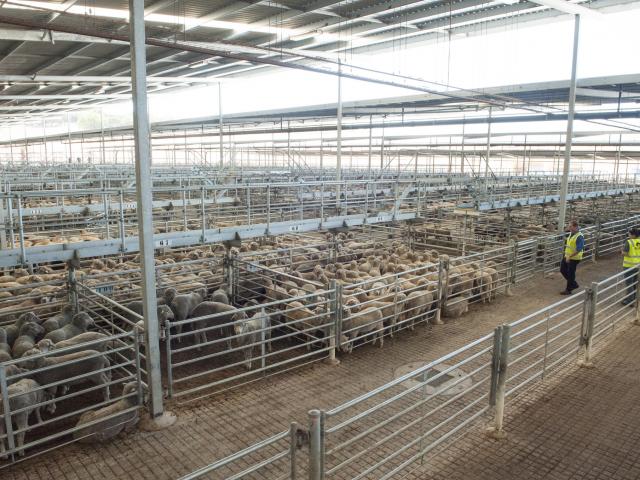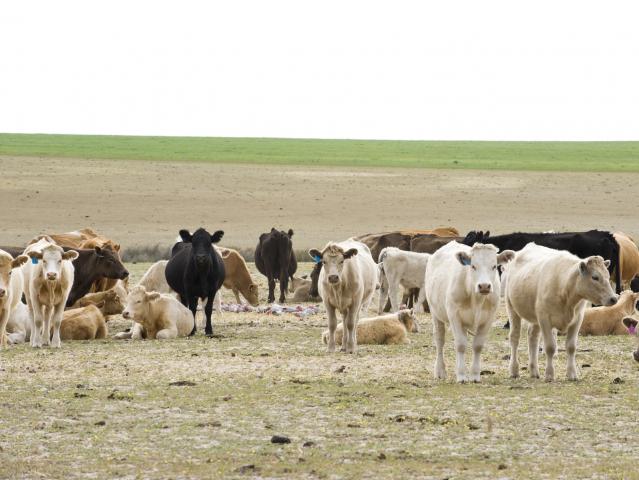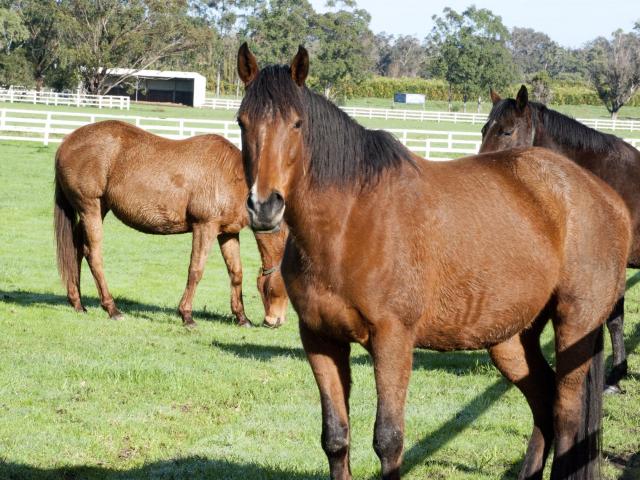The Animal welfare regulation newsletter provides information on the Department of Primary Industries and Regional Development’s role in ensuring that all livestock receive appropriate standards of care, and on the latest developments in animal welfare policies and standards.
Animal welfare amendments progress through Parliament
Critical amendments to the Animal Welfare Act 2002 (the Act) passed both houses of Parliament in November, paving the way for the implementation of the Australian Animal Welfare Standards and Guidelines in Western Australia.
Staff from the Animal Welfare Regulation team will now turn their attention to drafting the regulations which will allow the Standards to be enforceable. It is expected that these will be put in place next year.
Western Australia is now the only jurisdiction which has not yet implemented the national Standards and Guidelines for Land Transport of Livestock (2012). These, as well as those for Saleyards and Depots, are expected to be regulated first.
Standards cover such matters as determining fitness for the intended journey, time off water for animals in transit, and the provision of food and water at saleyards
Animal Welfare Director Dr Sarah Kahn said the achievement was a credit to the staff involved, particularly as it was completed against the backdrop of increasing public scrutiny on animal welfare.
“Animal welfare is a complex issue so the passage of the Bill was unlikely to be straightforward,” Sarah said.
“Ultimately, the ability to regulate the national Standards and Guidelines will improve the welfare of animals in Western Australia by moving away from the focus on acts of cruelty.”
Consistent with requirements for the development of regulatory programs, the department will consult with stakeholders on the drafting of the regulations.
Consultation is expected to start early in 2019. This process will include direct engagement with key stakeholders, and broader consultation with industry. Further details will be provided on the department’s website as they are finalised.
If you would like to get involved in the consultation process and have your say, send an email to animal.welfare@dpird.wa.gov.au so you can be kept updated.
Ingrown horn prosecutions a reminder to inspect livestock thoroughly
A number of animal welfare prosecutions throughout 2018 have highlighted the need for producers to closely and regularly inspect their livestock, and appropriately treat any issues that are observed.
In September, a landholder was fined $2200 in the Albany Courthouse after the offender pleaded guilty to one charge of cruelty under the Animal Welfare Act 2002 (the Act). The conviction related to events in October 2016, when the offender sent a consignment of eight cows to an abattoir. One animal from this consignment had an ingrown left horn.
At post mortem it was found that the ingrown horn had caused an injury to the cow which was 4cm wide and 3cm deep. The cow’s left eye was swollen and could not be opened, and it is estimated that the horn had been ingrown for a long period of time.
In another case, a landholder was fined $20,000 in the Busselton Courthouse in July after entering a plea of guilty to two charges of cruelty under the Act, relating to two steers with ingrown horns.
The first animal, sent to an abattoir in October 2016, had an ingrown horn which had penetrated to a depth of almost three centimetres and led to an infected, chronic wound on its cheek. The second animal, sent to an abattoir in November 2016, had an ingrown horn which had penetrated to a depth of two centimetres at its deepest point. Tissue surrounding the wound was significantly swollen. Both injuries were assessed as being of some duration in time, likely weeks.
In other cases involving both sheep and cattle, animals with ingrown horns were identified at saleyards by inspectors from the department’s Livestock Compliance Unit who were undertaking routine inspections. In one of these incidents a court order was also imposed, prohibiting the landholder from being a person in charge of livestock until 2021 unless certain conditions were complied with.
Department principal compliance inspector Charlotte McIntyre said the convictions were a reminder to anyone keeping animals that they are required to continually and closely monitor them to identify any potential animal welfare issues.
“These incidents highlight not only a lack of general understanding of what constitutes being ‘fit to load’, but also a lack of attention when it comes to thoroughly inspecting animals before they are loaded,” Charlotte said.
“The Model Code of Practice for the Welfare of Animals: Cattle clearly states that any inward growing horns likely to penetrate or contact facial features should be trimmed appropriately.
“This is a straightforward procedure but if there is any doubt, a veterinarian should be consulted for advice.
“In addition, all animals to be transported should be inspected to ensure they are fit to travel. Transporting unwell or injured animals is likely to cause additional, unnecessary harm. If there is any doubt, the animals shouldn’t be loaded.”
To report suspected cruelty to animals, contact the RSPCA on +61 (0)8 9209 9300 or 1300 278 3589 (emergencies only).
Adequate provision of water a key as weather warms up
As the weather heats up throughout the State, producers are reminded to ensure that livestock are being provided with proper and sufficient water to stay hydrated.
It may seem obvious, but the provision of water on property must be of good quality and sufficient quantity to satisfy the needs of all livestock. Pregnant and lactating livestock and livestock in hotter climates need to be able to access water regularly—all stock should be able to access good quality water every 24 hours as a minimum.
Make sure that dams are safe to access and do not risk the animal bogging, check natural water supplies like soaks and streams to ensure that salinity is not a problem, and maintain bores, tanks and troughs to ensure a constant supply.
During transit animals should have access to water up until the point of loading during hot weather, or if pregnant or lactating. Journeys should be planned carefully to make sure that animals are not held off water for long periods. More information is available in the relevant Code of Practice for the species that is being transported.
Failure to provide proper and sufficient water is an offence under the Act.
What are the Standards and Guidelines, and what do they mean for me?

The Australian Animal Welfare Standards and Guidelines, or Standards and Guidelines, are being developed by State and Territory jurisdictions with the aim of having consistent and clear welfare regulation across Australia. Coordinated by Animal Health Australia, the Standards and Guidelines are based on the revision of the current Model Codes of Practice for the Welfare of Animals.
Australian producers have always been aware of their responsibilities for livestock welfare. However, increasing public awareness and expectations are placing significant pressure on our livestock industries to improve animal welfare. The development of welfare Standards and Guidelines underpins access to overseas markets and reinforces Australia’s international leadership in livestock welfare.
Until now, limitations in Western Australia’s Animal Welfare Act 2002 (the Act) have prevented the Standards and Guidelines from being implemented in this State. However, the recent amendments to the Act, which received Royal assent on 28 November, will allow the Standards and Guidelines to be regulated.
The national Standards set mandatory requirements for the humane treatment of animals. They use the word ‘must’ and provide the basis for developing and implementing consistent legislation and enforcement across Australia.
The Guidelines advise on recommended practices but are not mandatory. Guidelines use the word ‘should’ and are designed to complement the Standards. Non-compliance with one or more Guidelines will not be considered an offence under law.
The development of Standards and Guidelines includes a process of national consultation with stakeholders, which provides an opportunity for all members of the public and industry to comment on the draft Standards and Guidelines before they are finalised.
The current endorsed Standards and Guidelines are:
• Animals in Saleyards and Depots (2018)
All states and territories except WA have implemented the Land Transport Standards. The Sheep and Cattle Standards have been implemented in South Australia and New South Wales, and all jurisdictions are considering the implementation of the Standards and Guidelines on Saleyards and Depots.
Unsafe animal enclosures attract large fine
A landholder in Pinjar was fined $6000 in Perth Magistrates Court in October for failing to comply with a number of direction notices issued under the Animal Welfare Act 2002.
The livestock owner, who keeps sheep, cattle, pigs and poultry on his property, was directed to remove substantial amounts of hazardous material from the animals’ enclosures following a visit by an inspector from the department’s Livestock Compliance Unit (LCU).
The inspector first visited the property in July 2015 and saw several enclosures with large amounts of hazardous rubbish in them, including corrugated iron, wire mesh, and wooden pallets. Four direction notices were issued in August 2015 ordering him to move the livestock away from the property until all materials that were likely to cause harm had been removed.
The inspector subsequently visited the property on several occasions to check on the improvements to the enclosures but found that the directions had not been complied with.
In addition to the fine, the man was ordered to pay $4000 in legal costs and directed to remove the potentially harmful material or destock by 2 November. Inspectors visited the property soon after the deadline had passed and found that the enclosures had been satisfactorily cleaned up.
Department principal compliance inspector Charlotte McIntyre said the successful conviction was a reminder that directions from LCU inspectors regarding animal welfare were serious and needed to be followed.
“On this occasion, while the state of the enclosures was hazardous to the animals, the offender was given ample time to rectify them,” Charlotte said.
“There was disregard for not only the instructions in the direction notices, but also for the welfare of the animals.
“We work with the community and landholders to ensure the best animal welfare outcomes but, where appropriate, will prosecute people who flout the law when it comes to the welfare of animals.”
To report suspected cruelty to animals, contact the RSPCA on +61 (0)8 9209 9300 or 1300 278 3589 (emergencies only).



